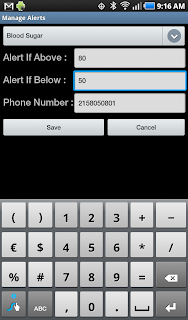I bought the new Samsung Nexus Galaxy phone last
week. This is the first Android phone
shipping with Ice Cream Sandwich version of the O/S. I waited for the Verizon Wireless version of
the phone, for many reasons.
Samsung Galaxy Nexus
1. 4G LTE
footprint of Verizon is awesome and only getting better.
2. Verizon is my
primary provider and I am sick of ATT and T Mobile slow networks.
3. My DroidX was
showing its age and I wanted to replace my primary phone with a faster phone
that had front and rear cameras and could do effective video conferencing over
4G
LifeSignals Vital Signs App
One of the coolest features with the new Nexus is the
facial recognition screen locking. I
found it very easy and intuitive to set up and it works very well in normal
lighting conditions. It does not work
well if you are wearing sunglasses or a hat.
I did it this morning while working out on the elliptical, worked fine
each time. It worked while I was driving
as well. If it does not recognize you,
it will prompt you for a PIN number after a few seconds, it is not annoying at
all.
Compatibility with the LifeSignals Application in Ice
Cream Sandwich: I was worried that I
bought a new phone for my own use and that the current version of LifeSignals
App would not function. I was pleasantly
surprised, it functions perfectly and looks terrific.
Battery life is a probably my biggest complaint. In Mobile Network settings you can de-select
4G LTE and select only 3G. I did that
this morning and it appears to noticeably improve battery life. I will keep it in 3G mode unless I plan to do
a demonstration of our App or am using Video Conferencing. I don't have 4G in Doylestown where I live,
so it is a moot point for when I am at home.
My second biggest complaint is Verizon. They raised the price of Hotspot from $20 to
$30 per month for 4G Hotspot. One cool
new feature in Ice Cream Sandwich is there are now 2 methods for tethering the
phone. In addition to turning the phone
into a Wifi Router you have the option of using Bluetooth Tethering. I haven't used it yet, but I assume that is
handy in the new Ford Synch systems and maybe in noisy Wifi environments. It may be a little more secure (through
obscurity) than traditional Wifi hotspot in Airports and other busy areas.
All in all, I am very happy with the phone and feel that
I will like it more as time goes by. I
would highly recommend the phone to any Android user.











